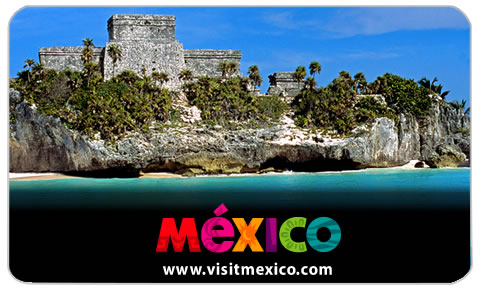Venue and tourism
During IE'12 a group of students from Instituto Tecnológico de León will be performing mexican traditional dances.
See: http://youtu.be/jMjUVlR0VrY
About Guanajuato
Birthplace of the Independence movement; a city full of legend.
Considered by many the most beautiful colonial city in the Americas, owes its fame and fortune to rich veins of silver and gold discovered by the Spanish many years ago. Guanajuato’s city streets are labyrinthine and reminiscent of the medieval quarters of Seville, Granada, or Fez. During prehispanic times, the region was originally inhabited by the nomadic Chichimeca tribe. The first incursions by the Spanish occurred in 1541 and the territory was formally founded in 1554. Over the course of its long history, has borne witness to key moments in Mexico’s history and holds clues to the country’s past.
This state capital hosts the International Cervantes Festival each year; other attractions include the Teatro Juárez, the legendary La Valenciana mine, and the museum that houses the famous Guanajuato mummies.
Stroll along its narrow alleyways, tunnels, cobbled streets; visit gravity-defying balconies, stone quarries, the Miniatures Museum, the Mineralogy Museum, the Mariana Gallery, the Museo Iconográfico de Quijote (with its unique display of items related to Cervantes’ famous literary creation), the house-museum of Diego Rivera, and the gardens of the ex-Hacienda de San Gabriel de Barrera. Come and discover why UNESCO designated Guanajuato as a World Heritage Site in 1998. The best way to discover the city’s downtown is on foot. The flow of vehicular traffic is complicated by its narrow streets, and most of the historic buildings are off limits to cars.
You can travel to Guanajuato by road or fly into its international airport. Mexico’s central region has the country’s most efficient road system; highways 57 and 45 cross the Altiplano and provide connections to this Magical City.
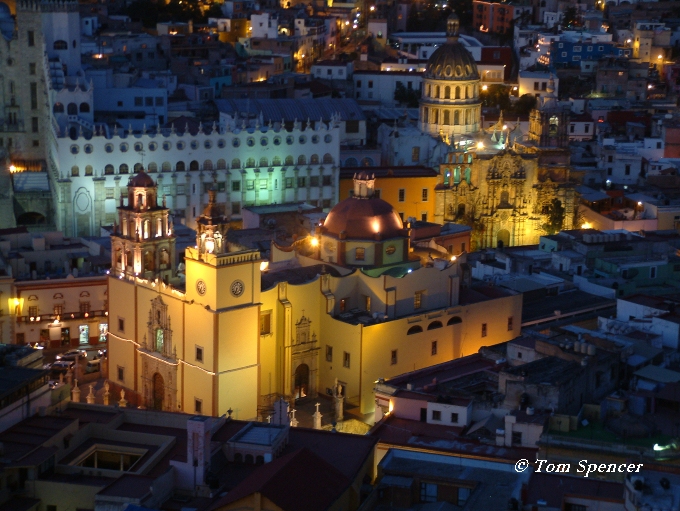
Guanajuato
The state of Guanajuato includes important towns such as Acámbaro, Salvatierra, Yuriria, Valle de Santiago, Uriangato, Morelón, San Luis de la Paz, San Miguel de Allende, and Dolores Hidalgo, all within the Sierra Gorda. Industrial parks ensure the state continues to develop commercially.
Places of Interest
Union Garden: A beautiful triangular shaped park located in the canter of the city, it is the most popular gathering point in Guanajuato.
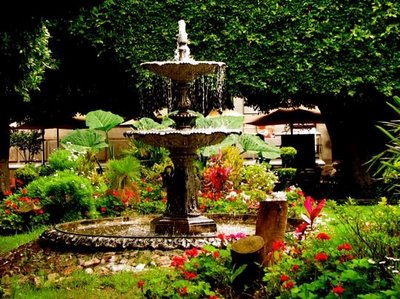
Union Garden
Juarez Theater: Construction of this theater began in 1873 and was opened in 1903 by President Porfirio Diaz. One of the most beautiful theaters in Mexico, it exhibits a variety of architectural styles. The facade is Doric-Roman, the lobby is French and the interior is Moorish in style
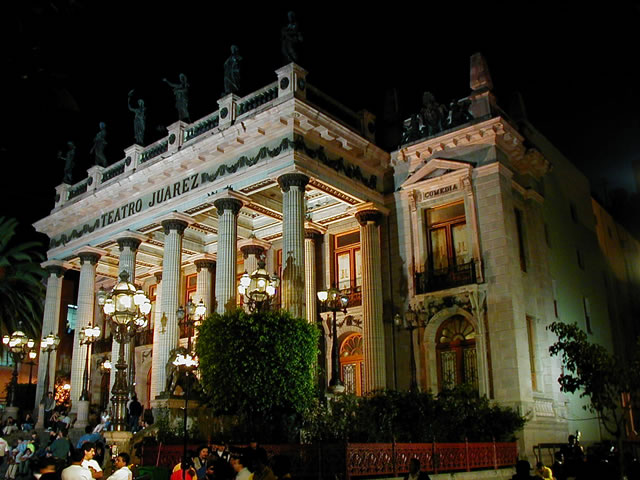
Juarez Theater
Peace Plaza: This semi-triangular plaza is surrounded by some of the most beautiful buildings in the city. The monument in the center of the plaza is bronze with a marble and quarry stone base which was erected to commemorate the end of the War of Independence
Basilica of Our Lady of Guanajuato: Constructed between 1671 and 1696, the facade is baroque in style and the interior contains a statue of the Patron Virgin of the city which was a gift from King Charles I of Spain and his son Phillip II.
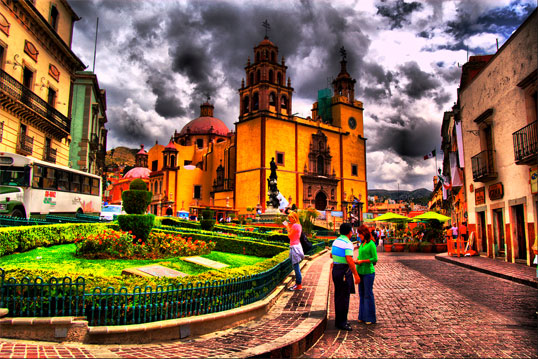
Basilica of Our Lady of Guanajuato
Mummy Museum: This museum is certainly one of kind. On display are 119 mummified bodies which have been preserved in perfect condition as a result of the high mineral content of the soil. Open Monday to Sunday 9:00am to 6:00pm
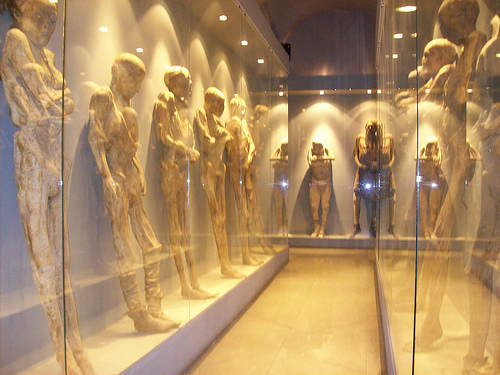
Mummy Museum
Alhondiga de Granaditas Museum: This granary was the scene of one of Mexico's most courageous acts of war by Independence hero " El Pipila". Now an impressive museum Movement. Open Tuesday to Saturday 10:00am to 1:30pm and 4:00pm to 5:30pm
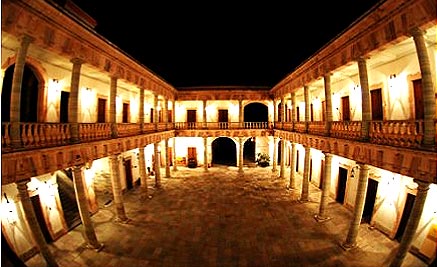
Alhondiga de Granaditas
Legislative Palace: Built in the 19th Century an inaugurated in 1903 by President General Porfirio Diaz. The facade is neoclassic in design and the interior has art nouveau influences.
Compañia Church: Built between 1747 and 1765, the facade of the church is churrigueresque in design. One may admire many restored paintings in the old sacristy
Count Raul's Mansion: Considered one of the purest examples of neoclassic architecture in Mexico, this mansion was designed by famed architect Francisco Eduardo Tresguerras
University of Guanajuato: In 1732 was originally used as a hospice. This beautiful neoclassic building of green quarry stone is characterized by its impressive outdoor staircase. The University is the center of academic pursuits and also promotes artistic and cultural activities.
Hidalgo Market: Built at the beginning of 20th century, this market was inaugurated in 1910 by President General Porfirio Diaz. The facade of the building is made of pink quarry stone. Here one may purchase original handicrafts and traditional local candies.
San Roque Church and Plaza: The church dates back to 1726 and its facade is baroque in style . Since 1953 theater groups have been enacting Cervantes plays in the Plaza outside the church. These plays eventually led to the creation of the international Cervantes Festival
Kiss Alley: Famous for its legend of eternal love, this romantic spot is formed by two balconies just 23 inches apart.
San Fernando Plaza: A typical Guanajuato plaza surrounded by beautiful colonial houses. It is also used for University cultural events.
Quijote Iconographic Museum: Opened in 1987, this unique museum exhibits works dedicated to the famous Spanish fictional character "Don Quixote". These works were donated by Mr. Eulalio Ferrer.
Alfredo Duges Museum: This natural history museum was opened in 1941 and is situated in the central building of the University of Guanajuato. It contains a collection of reptiles, batrachians, fish, mammalians, insects, birds, plants, minerals, bones and fossils. Open Monday to Friday 10:00am to 6:00pm
Diego Rivera Museum: The internationally renowned muralist Diego Rivera was born in this 18th Century colonial house. The museum houses the original furniture and items belonging to the artist and his family. A collection of Diego Rivera's works are also on display. Open Tuesday to Saturday 10:00am to 6:30pm and Sunday 10:00am to 2:30pm
Mineralogy Museum: Situated in the School of Mining at the University of Guanajuato, this museum houses one of the finest mineralogy collections in the Americas. Open Monday to Friday 10:00am to 6:00pm
Ex Hacienda San Gabriel de Barrera: This museum exhibits furniture and painting from the 18th Century. The beautiful hacienda gardens representing 17 countries are definitely worth a visit. Open Monday to Sunday 9:00am to 6:30pm
External Links
About Mexico (including Guanajuato)
http://www.visitmexico.com/en_
About Guanajuato:
http://www.tourbymexico.com/
http://www.guanajuatoenlinea.
http://www.enjoymexico.net/
http://www.visitmexico.com/en-
http://www.guanajuatocapital.
(in english once you choose an item)
in spanish:
http://www.gtoexperience.mx/destinos/guanajuato

